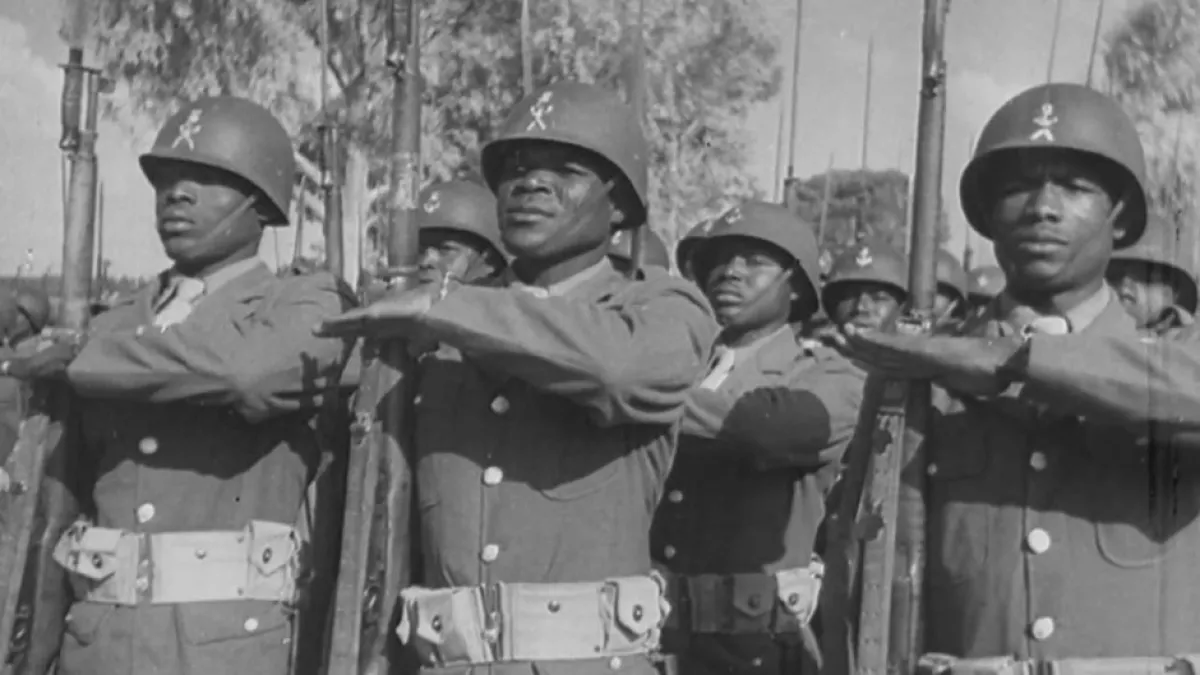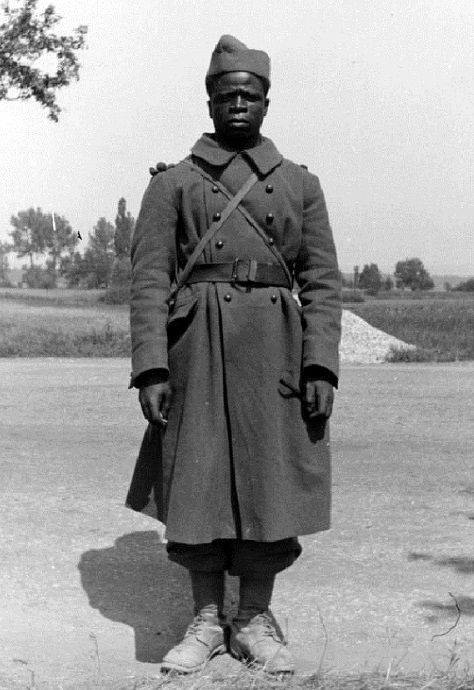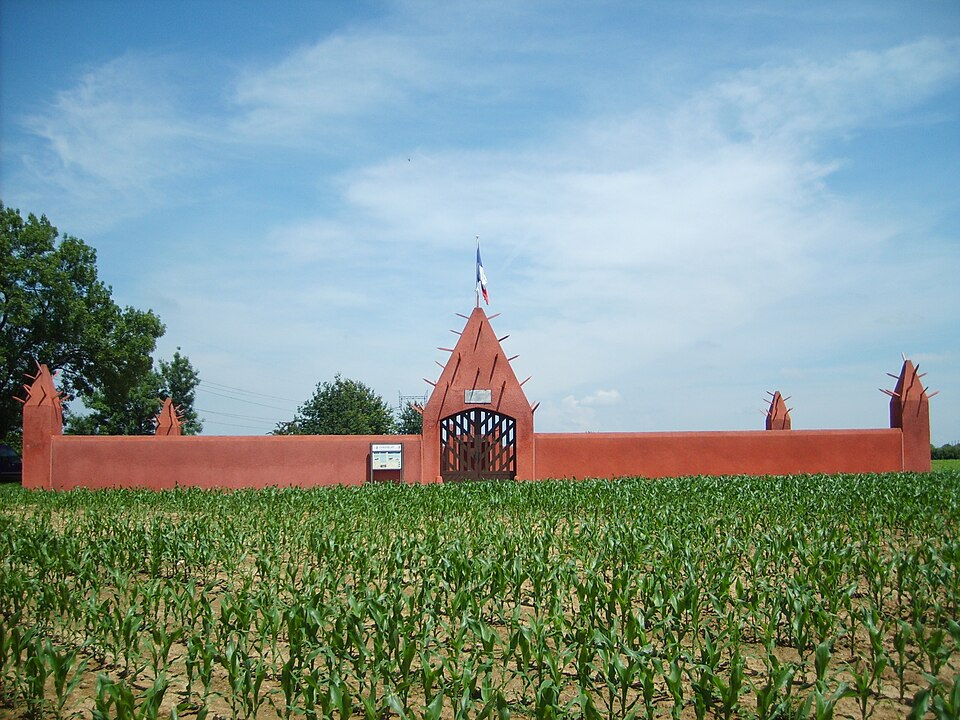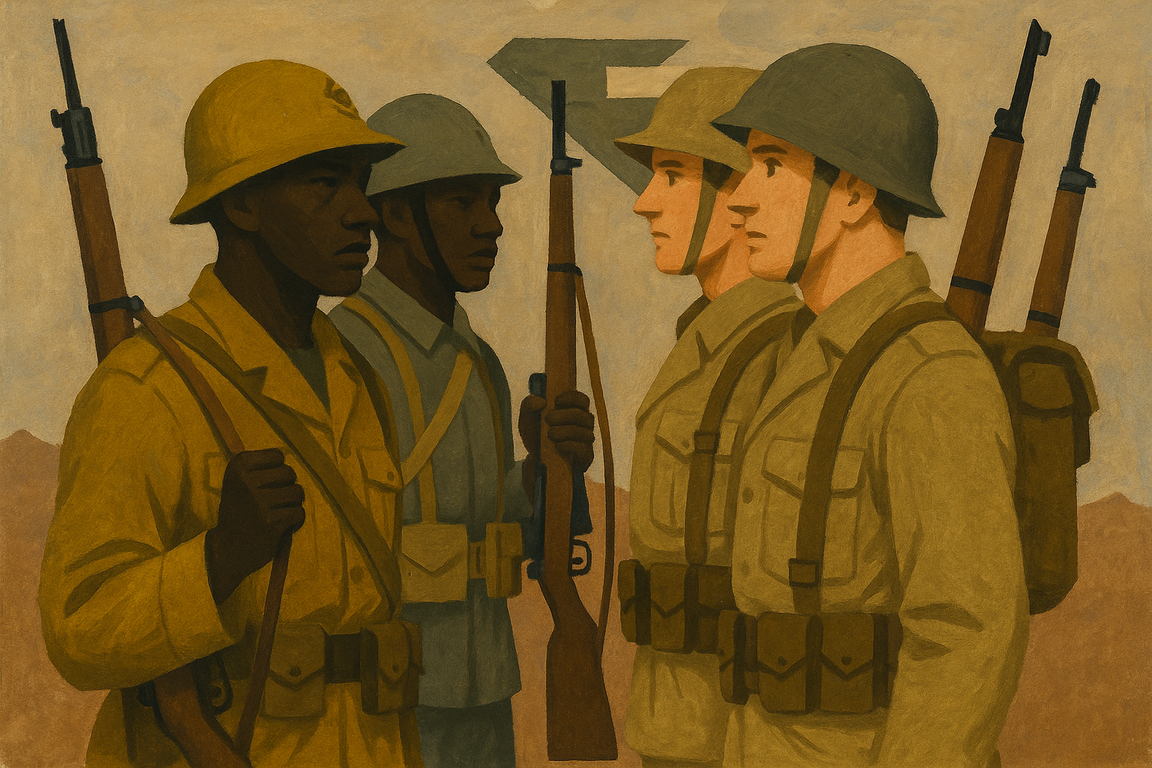In 1944, France removed its African soldiers from the front lines, erasing their role in the Liberation. Discover the story behind the “whitening” of colonial troops.
The erasure of black soldiers from France’s liberation

In the fall of 1944, while Paris cheered its liberators and the Champs-Élysées echoed with the cries of victory, another scene played out far from the spotlight. Along the damp roads of southern France, out of view of cameras and applause, entire columns of exhausted Black soldiers—battle-worn from months of combat—were quietly relieved of duty. These men, who had come from French West Africa, Chad, Senegal, or Cameroon, had shed their sweat and blood for France. They were known as the “Tirailleurs Sénégalais,” though few were actually Senegalese. And without fanfare, they were pulled from the front lines.
History would later refer to this as the “whitening of colonial troops”—a technical, almost neutral phrase that conceals a politically charged act: replacing Black soldiers with white fighters from the French Forces of the Interior (FFI), in the name of a new staging of the Liberation. This replacement was neither incidental nor logistical. It was orchestrated. Deliberate. Silent. Erasing.
At a time of triumphant photographs, the reborn Republic did not want African faces to symbolize its return to the light. In a France being rebuilt, memory too had to be reconfigured. And the soldiers of the Empire, who had worn the uniform with pride, were simply removed from the frame.
But this story should not remain on the margins of heroic narratives. For it raises crucial questions about how a nation treats its defenders. It tells of the violence of delayed recognition, and the weight of a racial memory silenced in favor of a white national narrative. Finally, it urges us to confront the scars of a past that too many archives, speeches, and silences have sought to bury.
The Tirailleurs Sénégalais: Fighters in the shadows

They came from Saint-Louis, Bamako, Ouagadougou, or Brazzaville. Many had never seen the sea—let alone stepped onto the cold soil of Provence. But they were there. Helmets tight on their heads, bayonets fixed, sometimes singing in Wolof, Bamanan, or Ewe to ward off fear. These men—grouped under the name “Tirailleurs Sénégalais” though they hailed from across the African colonies—formed the backbone of a reborn French army, forged in the ashes of the humiliation of 1940.
Their involvement in World War II was neither anecdotal nor secondary. It was massive, decisive—and yet often pushed to the background of national narratives. From the early years of the war, as mainland France was occupied and Vichy collaborated, African territories aligned with Free France became recruitment grounds. Under General Leclerc’s command and with the support of Félix Éboué, African troops (notably from French Equatorial Africa) took part in the campaigns of Fezzan, Libya, and Tunisia.
But it was in August 1944, during the Provence landings, that their role became undeniable. General de Lattre de Tassigny’s First French Army included around 260,000 men—almost 130,000 of whom came from the African colonies. Among them, more than 20,000 African Tirailleurs were sent to the front lines. They advanced under fire, liberated Toulon and Marseille, moved up the Rhône Valley, fought bitter battles in the Vosges, and finally broke through to Germany.
These men were seasoned and battle-hardened. Many had fought in 1939–1940 or in the colonial forces. They knew the front’s hardships, the injustice of unequal rations, and the harshness of command. They fought for a homeland that often did not see them as sons. Still, they pressed on—for honor, for their people, for the promise that the Republic seemed to whisper to them: recognition, at last.

Their sacrifice extended beyond the battlefield. Some had been prisoners of war in 1940, locked in German stalags under inhumane conditions. Others saw comrades massacred—like in Chasselay in 1940, where a column of Tirailleurs was executed by the Nazis for being Black.
And yet, when France began winning battles on home soil, their names were absent from speeches. Their faces were missing from official photos. They were on the front lines, but absent from the lines of History. Fighters in the shadows, asked to die for a homeland that struggled to acknowledge them.
This brutal paradox was even more glaring given that some French officers viewed the Tirailleurs as more effective, disciplined, and resilient than the metropolitan recruits from the internal Resistance. Yet it was these very men who were asked, weeks later, to step aside.
“Whitening”: A strategy of erasure
By late summer 1944, France’s roads were strewn with ruins, silence, and songs of victory. But within that jubilation, another story unfolded—a story the Republic would not sing. Even as African troops advanced toward Alsace, flushing out the last German strongholds and spilling more blood on the slopes of the Vosges, a political and racial decision was made to erase their victory. This was what military bureaucracy coldly called the “whitening” of colonial troops.
Starting in September 1944, orders from the high command—coordinated with Allied forces—mandated the gradual withdrawal of the Tirailleurs Sénégalais and other Black soldiers from the First French Army. In front-line regiments, African combatants were replaced by white recruits from the French Forces of the Interior (FFI). These new arrivals, often less trained and less experienced, took over from the colonial veterans. The Black soldiers were redeployed to the South, assigned to logistics or supply duties, or simply repatriated—without fanfare, without farewells.
In some units, the scenes were surreal. Decorated and wounded Tirailleurs had to surrender their weapons and brand-new gear—symbols of their courage—to barely trained white civilians, sometimes openly hostile. The stripping was literal. Uniforms were taken off like names erased, memories wiped, debts denied. Veterans of the 9th Colonial Infantry Division recalled bitterly: “That day, we were made invisible.”
This process of “whitening” was neither a coincidence nor mere military adjustment. It was a strategic decision shaped by political, social, and racial motives. The American army, segregated until 1948, opposed the presence of Black troops at the gates of liberated Europe, fearing the image of an army “too Black” marching triumphantly into Paris or Berlin. A January 1944 memo from American General Walter B. Smith left no doubt: Black soldiers must be separated from white troops—just as in the U.S. Army.
But the pressure wasn’t only from the Allies. The French authorities, intent on restoring a white, sovereign Republic, were complicit in this erasure. General de Gaulle—a man of vision but also a realist strategist—sought to rally the internal Resistance and foster national unity. In the French imagination of the time, the overwhelming presence of African troops at the Liberation threatened to undermine the narrative of a France that had “liberated itself.”
To justify the withdrawal, more acceptable reasons were invoked: the cold, troop morale, frostbite, a desire to return home. Humanitarian and strategic language was used. But to the Tirailleurs, it felt like betrayal. They, who had shed blood for France, were excluded from the final story. They would not march on the Champs-Élysées. They would not appear in photos of liberated Paris. At the Carnavalet Museum’s Liberation exhibition, no Black faces appeared in the photos. An omission too precise to be accidental.
This whitening also served to restore colonial order. The war had upended everything. Black men had commanded. Indigenous soldiers had liberated white civilians. African troops had broken bread with French soldiers. In the mud, under the shells, racial hierarchy had temporarily been suspended. But colonial power could not tolerate this for long. Order had to be restored—through carefully orchestrated erasure.
In his documentary The Whitening of Colonial Troops, director Jean-Baptiste Dusséaux exposes this mechanism of invisibilization with clarity: the French army chose to forgo 20,000 seasoned soldiers rather than embrace the diversity of its liberators. That tragic decision left a lasting imprint—a silence, a forgetting, a moral debt that History has yet to repay.
The motivations behind the withdrawal

For a long time, the official narrative cloaked the whitening of colonial troops under a veil of military rationality. Logistical needs, exhaustion, strategic redeployment—these were the explanations offered. But scratch the surface, and the true workings of a deliberate erasure are revealed—rooted in international power dynamics, fear of symbolic mixing, and the preservation of a declining empire. This withdrawal was not just a tactical operation—it was a political, cultural, and racial choice.
In January 1944, a confidential memo signed by General Walter Bedell Smith, Chief of Staff to General Eisenhower, landed on French desks. The tone was direct: French forces were advised to limit the presence of Black soldiers in units operating alongside American troops. The context? The U.S. Army was still structurally segregated—African American soldiers did not fight alongside whites. They were confined to logistics, supply, and transportation. Their service was acknowledged… as long as it remained invisible.
In such a system, the idea that Black soldiers—Africans, no less—might liberate European cities, parade through Paris, or interact with civilians was seen as a direct challenge to the racial order of the United States. The Allied High Command applied pressure, and France, still striving to restore its legitimacy within the coalition, fell in line. Whitening thus became a diplomatic concession—a gesture to a white America that did not want the image of a Europe liberated by “unacceptable” forces.
Yet the initiative was not solely imposed by the Allies. It also stemmed from a deeply rooted French reflex: the need to preserve colonial order. The war had shattered the geographic and symbolic boundaries between colonizers and colonized. African Tirailleurs had carried the colors of the Republic. They had liberated Marseille, Toulon, and Lyon. They had experienced the equality of the trenches. Some had even seen their leadership acknowledged, their skills praised, their heroism admired.
And that made the French establishment uneasy.
The French elites feared that this military prestige would transform into political or social demands. That these soldiers, upon returning to Africa after fighting for the “land of human rights,” would demand equality, citizenship, representation. How could they be refused? How could the Indigénat system be maintained after calling them “brothers-in-arms”? For many within the colonial establishment, removing the Tirailleurs was a way of putting everyone “back in their place.”
More subtly, the withdrawal also helped reconstruct a national narrative centered on a white, internal, “Gaullist” Resistance—a rebirth story that erased colonial figures from the pantheon of heroes. France needed to rebuild, but without the faces that reminded too vividly of its imperial ambiguities.
One of the most often-cited explanations was the climate. The harsh, wet, frigid European winter, it was said, had weakened the African soldiers, supposedly unprepared for the extreme conditions in the Vosges or Alsace. Frostbite, persistent colds, low morale—these were the stated concerns. Statistics were cited: more than 300 cases of frostbite reported in a single day within the 1st DMI, on October 10, 1944.
But this reasoning does not hold.
First, these soldiers had already fought in France during World War I—in trench mud, under Marne rain, in even worse conditions. Second, cold-related casualties were not higher than those in other regiments. And third, the Tirailleurs themselves had not asked to be sent back; on the contrary, they hoped to participate in the liberation of a country they had helped defend.
Behind this medical argument lay a political decision. Climate became a convenient alibi to disguise a profoundly racial act. And in internal military reports, the phrasing betrays another truth: the fear of symbolic mixing. The contact between Black soldiers and white populations—especially women—was viewed as a threat to moral order. Real or exaggerated incidents from Italy stoked these anxieties.
Disarmed, evicted from the fields of honor, the Tirailleurs Sénégalais were denied a final word. No consultation, no farewell speeches. Their withdrawal was administrative, abrupt, anonymous. In some cases, they even had to hand over their uniforms to freshly enrolled FFI recruits—young white Frenchmen. They were reassigned to maintenance units, then shipped back to Dakar, Bamako, Conakry. Some never understood why. Others carried a deep, quiet anger, passed on to their children and grandchildren.
Their silence became that of the Republic. No recognition, no fair pension, no public decoration. Just absence. Whitening was more than a military withdrawal—it was an act of memorial laundering. A systematic erasure of faces, names, and heroic journeys.
Consequences and erased memory
To erase a soldier is not merely to disarm him. It is to disembody him—to strip his name from the national narrative, relegating him to history’s margins, where the silences of the state accumulate. The whitening of colonial troops, more than a military operation, created systematic invisibility—a symbolic exile that still haunts the memory of African and Afro-descendant diasporas.
When Paris was liberated, cameras lined the Champs-Élysées. They captured the joy, the flags, the embraces. They immortalized General Leclerc’s men, the white faces of the Resistance, the heroes of the Liberation. But in these now-iconic archival images, Black faces are absent. As if they had never fought. As if the Republic had freed itself without the help of those it had sent to die for its liberty.
The exclusion of the Tirailleurs Sénégalais from the victory parades was no accident. It was a political communication strategy. The aim was to reconstruct a heroic, homogeneous, white image of a resistant and victorious France. The colonial empire—though central to the facts—had to be erased in form. This denial of public presence had lasting consequences: for decades, schoolbooks, commemorations, and statues replicated the same blindness.
And what is not shown eventually ceases to exist.
But the men did not forget. And in the ports where they landed, in the barracks where they were held, the Tirailleurs murmured—then roared. They had given everything, and received only the shadow of recognition. Upon return, their pay was cut, their pensions slashed, their dignity trampled. Worse still: some were imprisoned again. Suspected of revolt, monitored as subversive bodies.
It was in Thiaroye, Senegal, in December 1944, that tensions reached a breaking point. Hundreds of former combatants, exasperated by their unjust treatment, gathered to demand their due. The French state, rather than listen, chose repression.
The Thiaroye massacre, during the night of November 30 to December 1, remains one of the darkest and most shameful pages of French military history. The exact death toll remains unclear (still obscured by bureaucracy), but testimonies speak of dozens of Tirailleurs coldly executed by the French army—on African soil, after serving France.
This tragedy is not merely a catastrophe—it is the symptom of a double abandonment: both military and memorial. These men, who came to defend the Republic, were killed for daring to demand justice.
It took until the turn of the 21st century for the Republic to begin, timidly, to reopen the case. Documentaries, academic research, novels, and artists have taken up this obscured chapter of history. Cinema entered the conversation—sometimes delicately, sometimes with force—to awaken dormant consciences. Voices rose to remind us that France’s history cannot be built upon the erasure of those who helped liberate it.

In 2006, Jacques Chirac publicly acknowledged the Thiaroye massacre. In 2010, pensions for colonial veterans were finally aligned with those of their French counterparts. But many had already died. Many never saw this belated gesture—too often perceived as a posthumous handout.
Even today, the names of the Tirailleurs Sénégalais are not inscribed on every school, street, or memorial. Their presence lingers only on a few steles, in a handful of November 11th ceremonies. Far too little for those who bled on the beaches of Provence, in the snows of the Vosges, or the fields of Lorraine.
And yet—they are here.
They live on in the songs of their grandchildren, in the fight for equality, in the transgenerational memory of the diaspora. They endure in every silence we refuse to accept, every tribute we demand, every line of history we strive to rewrite.
Sources
Julien Fargettas, Les tirailleurs sénégalais : les soldats noirs entre légendes et réalités, 1939–1945, Tallandier, 2012.
Claire Miot, Le retrait des tirailleurs sénégalais de la Première Armée française en 1944, Vingtième Siècle. Revue d’histoire, 2015.
Jean-Baptiste Dusséaux, Le Blanchiment des troupes coloniales, documentary, France 3, 2015.
Wikipedia article: “Blanchiment des troupes coloniales”
Table of contents
• The erasure of Black soldiers from France’s Liberation
• The Tirailleurs Sénégalais: fighters in the shadows
• “Whitening”: a strategy of erasure
• The motivations behind the withdrawal
• Consequences and erased memory
• Sources
